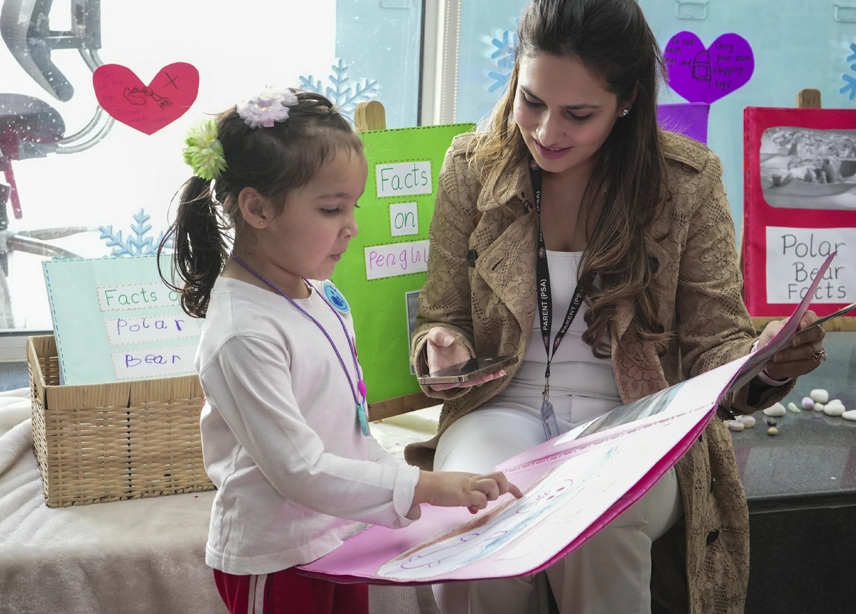Innovation is the introduction of new things, ideas or strategies (Oxford Dictionary) and in today’s constantly changing environment, the expectation for innovation and creativity is greater than ever. We want our teachers and students to thrive by being creative and inventive in their practice. We want to encourage teachers to take risks, be flexible and break boundaries.
According to LinkedIn, the top ‘soft skills’ (core) of 2024 include: adaptability, critical thinking, digital literacy and initiative. These skills and behaviours all interlock into one core ability — innovation. While it can be daunting and won’t always deliver results, it is an asset without a doubt. In today’s job market, holding the courage to experiment is more important than the fear of failure.

So, what does innovation look like in education and why is it important?
At The British School, innovation has strategically been integrated in the whole school development plan with a purpose to create an inspiring workforce that can refigure systems and strategies to make learning a more engaging process for students. Being innovative is the ability to see a gap and find a solution to fulfil that gap to make learning a richer experience. It is the recognition that something can be done differently.
An innovative teacher wants learning to be ‘sticky’ so that students retain the information. They work smarter not harder and strive for high impact and set high aspirations. Innovation is teaching students to lead, be reflective and remain curious. To ensure our students develop core skills of communication and social interaction, these skills need to be role modelled and promoted by us. Senior Leaders may plan and provide CPD opportunities and give us the tools to light the flame but the responsibility to ignite the flame comes down to the leader of the classroom.

How do we know innovation is happening?
There are teachers who are brave enough to be innovative despite the risk of potential failures. But how do we detect the same trait in our students? How do we see a tangible leaning towards innovation when a lesson is in progress? The best indication comes from active engagement. When students arrive at conclusions and learnings through collaboration and purposeful talk, the outcomes are aspirational.
Innovation does not merely mean providing time with the iPads or using a new app. It doesn’t just happen in STEAM sessions where students invent and explore materials. Innovation is about introducing new strategies and new ideas. We must intentionally make time to reflect and think creatively.
Potential innovative practices
When you research innovation, the trends mostly focus on technology-related opportunities. But when you delve deeper, there are many windows for practising innovation, including being creative, and to some degree playful, in your learning environment.
There is no magic list of suggestions, otherwise I would publish a book! Here are some trialled examples of some possible moments of innovation in the classroom.

When planning lessons and activities, take the following into account: create a platform for students to brainstorm, and let them lead and develop agency. You could even take learning outside of the four walls with class trips and open-air lessons. Actively use roleplay and debates in lessons, develop core skills, make lessons connect to real-life situations, give them a purpose, and give them the tools to be a part of the world.
Using pre-recorded marking and feedback through apps, students can see worked examples, see their work being marked and then act upon the feedback. This provides intense marking and also allows them time to work independently against the feedback while the teacher works with other students. This can lead to opportunities for Tier 2 intervention, especially when time constraints impact your ability to close learning gaps. An example of using stories could be in history’s Shackleton’s expedition of Antarctica where the focus was explorers. Rather than death by PowerPoint, the use of rich books and storytelling without reading out the text, captivates the attention of students and ignites passion in them. Managing sensitive issues of class, race and gender can be explored through healthy debate. In my class, answering the big question ‘Who was the bravest and who was the most influential?’ made students scrutinise evidence to debate who deserves this legacy, Mary Seacole or Florence Nightingale. Creating projects where students can build upon and acquire knowledge, and have a purpose is essential especially in non-core subjects. How can we expect students to make a difference if all they do are tasks directed from a flipchart? As staff, do we perform better during INSETs when we feel we have a voice, can collaborate and our efforts are visible by others? Of course we do! The same holds true for students of any age.
The reason why I am passionate about not relying on PowerPoints and flipcharts is because we become fixated on the presentation formatting and miss challenging our own thoughts. Adapting a plan is crucial for individual students; do electronic slides allow for this fluidity? Innovation is not meant to be more demanding but is meant to simplify and maximise. Once it is trialled and refined, it should ooze achievement, motivate students and teachers, radiate through the room and hopefully disseminate further than your classroom.
References:
- Mary Myatt, Back on Track, 2020
- Diana Osagie, Courageous Leadership 2019
- Brene Brown, Dare to Lead 2018
- Marking and Feedback EEF Feedback | EEF (educationendowmentfoundation.org.uk)
